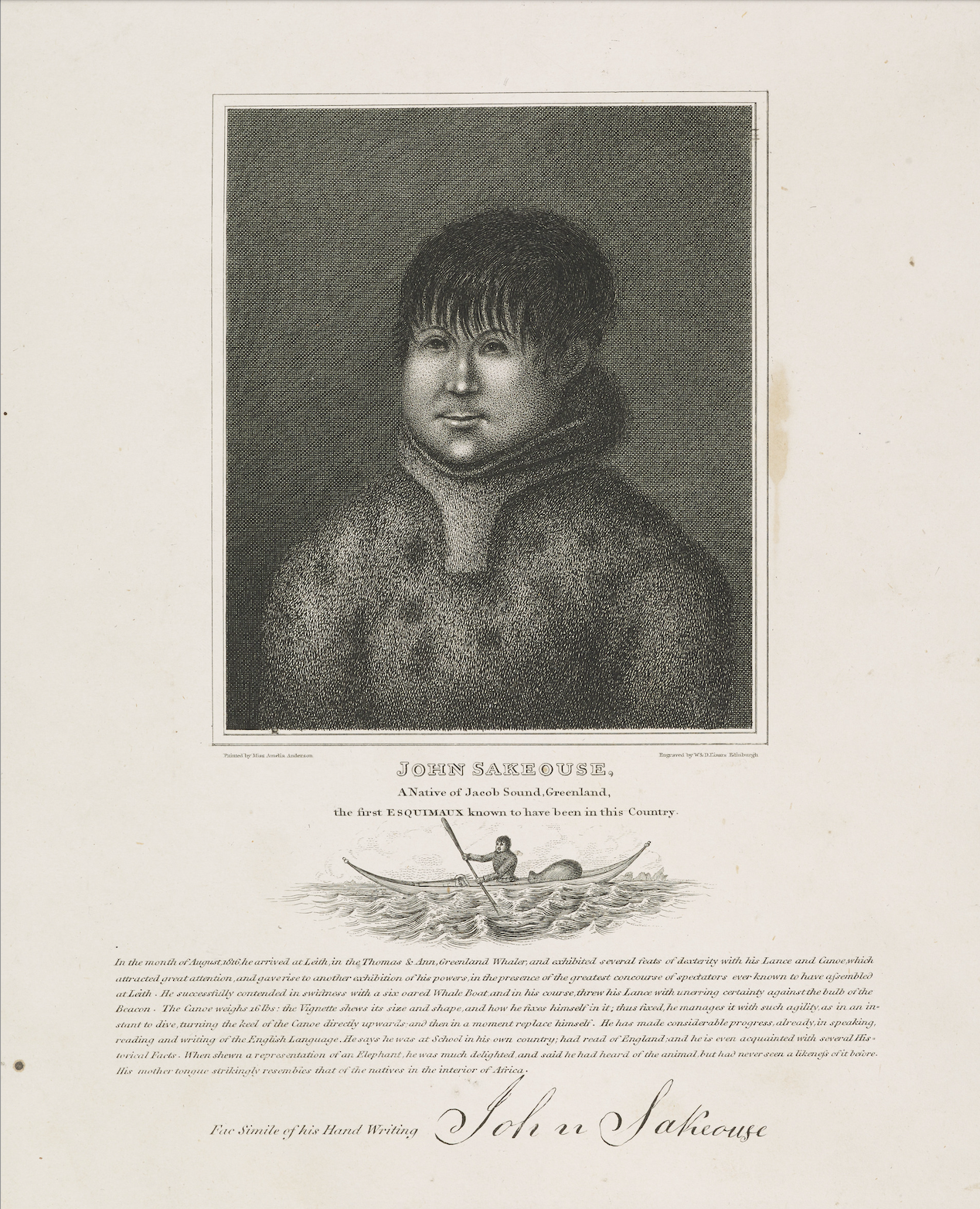John Sakeouse, A Native of Jacob Sound, Greenland, the First Esquimaux Known to Have Been in this Country. Amelia Anderson (artist). W&D. Lizars (engraver). c. 1816. Stipple engraving on paper. National Galleries of Scotland. FPP V125.1.
In the summer of 1816, Sakæus secretly boarded a Scottish whaler docked outside his hometown Ilulissat. He made sure to remain hidden until the ship was too far away from shore to be let off again, and sailed onwards to Scotland. What motivated Sakæus to leave his home? A closer look at the handbill suggests there was more to it than just his family situation (his parents died before he turned thirteen). Sakæus was clearly a highly skilled, socially clever, and daring individual who seized the opportunity for adventure when it presented itself.
In August 1816, Sakæus disembarked the whaler for a first visit to Scotland that lasted until the spring of 1817. In this period, he made money through a series of performances with his kayak outside Leith harbour, Edinburgh. From census lists of Ilulissat, we know that Sakæus was a very skilled kayak hunter. Growing up without parents, he was given material by the Danish colonial adminisitration to build a kayak so he could hunt for his own sustenance. Despite having no father to teach him, Sakæus quickly became a good hunter, as is noted in the margin of the census list only three years after he acquired material for his kayak.
The handbill reveals that Sakæus’s performances in Leith attracted enormous crowds. Below the engraved portrait of Sakæus and the figure of him paddling a kayak, the text says his performances gathered 'the greatest concourse of spectators ever known to have assembled at Leith'. The Edinburgh Star further reported on September 6th, 1816 that '[t]he sea was covered with boats filled with Ladies and Gentlemen’, while the pier, ‘windows and roofs of houses...the decks and riggings of the vessels’ were so crowded with spectators that some were pushed into the water.
From these newspaper reports, it seems like Sakæus's performances were well worth the squeeze. It featured a rowing contest with a 'well-manned six-oared boat', which Sakæus won with little effort. According to the Edinburgh Star, he 'evidently showed his ability to overcome his opponents in point of speed, by the advantages he often gave them, and which he as often redeemed’. Reporting on Sakæus's kayaking capabilities on September 4th, 1816, the Aberdeen Journal further noted how ‘in an instant, he may be seen to dive under the water, head down and keel uppermost; again, in the twinkling of an eye, he raises himself erect out of the water, and scuds along as if nothing had happened’. Clearly impressed by Sakæus’s skill in handling the harpoon, the Caledonian Mercury reported on September 2nd, 1816: ‘He can, with the greatest indifference, strike a ship-biscuit floating in the water, and split it at the distance of 30 yards’!
Confidently showing off his amazing kayaking and harpoon skills to large crowds, Sakæus's spectacular entrance set the tone for his continued stay in Edinburgh. Becoming a local celebrity, Sakæus made several friends and was given opportunities that are rare in the history of Indigenous travellers through empire.
Essay by Ingeborg Høvik
